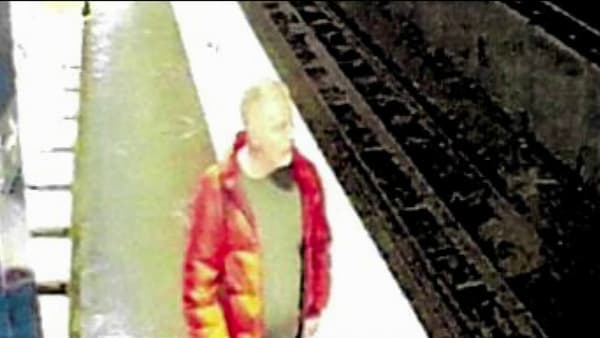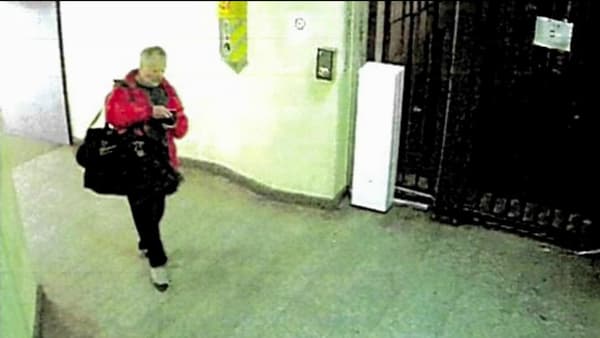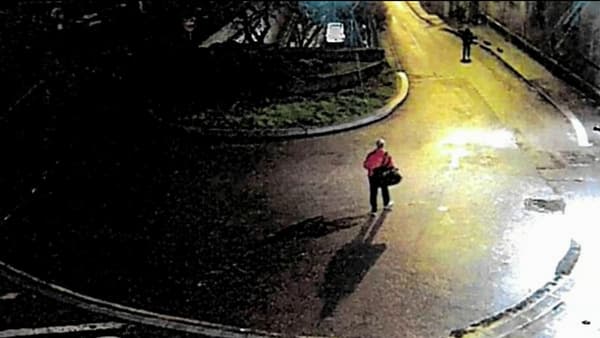BFM TV DOCUMENT. Before going to rue d’Enghien in the 10th arrondissement of Paris where he killed three Kurds, William Malet went to Saint-Denis where he says he has given up on taking action. The civil parties wonder about the presence of a possible accomplice.
It is 6:39 a.m. on December 23, 2022 when William Malet is filmed by CCTV cameras leaving the SNCF station in Saint-Denis, in Seine-Saint-Denis. This 69-year-old man dressed in a red anorak and black pants, who will kill three nationals of the Kurdish community in Paris a few hours later, has just arrived via a train taken from the Châtelet-les-Halles station.
Carrying a black shoulder bag, the sexagenarian “walks slowly”, note the police officers who examined these images. Just before leaving the camera’s field at 6:42 a.m., rue Ambroise Croizat a few meters from the station, William Malet kneels in front of his bag, seeming to store the things inside, namely “chargers” as explained the respondent during his interrogations.

He will reappear 1 minute 42 later, still with his bag “which he struggles to carry”, specify the investigators for the first time. “This bag seems quite heavy and falls once again at the level of the bend in his elbow”, they still indicate. What happened in this lapse of time when William Malet is no longer in the field of the camera? For the civil parties, the question now arises of a possible accomplice who could have provided him with weapons.
A planned attack in Saint-Denis
The day after the attack in front of the Kurdish cultural center on rue d’Enghien, the public prosecutor of Paris had indicated that the suspect had a plan for an attack in Saint-Denis. Why Saint Denis? “Because there are a lot of immigrants”, explains William Malet to the investigating judges, during his interrogation, which BFMTV learned about. Why did you go there so early? “At the station, there are always people.” So why get out?
“I didn’t want to shoot at a station, as a former railway worker I wasn’t going to shoot at a station.”
Already convicted of attacking migrants with machetes, banned from carrying weapons – “for me, weapons were my whole life”, he told the judges last March – presenting himself as “depressed” and suicidal, William Malet wanted to give in to his “sadistic fantasies” by “killing someone before he died”. Why did he then give up when he went to Saint-Denis if he had plans to take action? “I had taken a large bag and a spare anorak and arrived there, it was not going because the pistol chargers were wandering around everywhere,” he told the magistrates.
“I said to myself ‘it’s not going to do it’, then I hesitated, in fact I hesitated, I came back. (…) I said to myself that I could do it (…) but I said to myself ‘I’m not going to go back there, I’m going to rue d’Enghien’ I knew that there was the Kurdish thing.”

Attack or attack?
Faced with the examining magistrates, William Malet, indicted for murders and attempted murders of a racist nature, spontaneously evokes his desire to commit an “attack” “to accentuate his (my) suicide”. An attack is “shooting foreigners”, he adds. On reading the definition of the term “attack”, the retired SNCF says that his acting out “is not really ideological”. He finds himself “vaguely” in an action aimed “to offend the rights, the great principles, the traditions”.

For lack of people in Saint-Denis and encumbered by his bag, he had returned to his parents in the 2nd arrondissement of Paris before going to rue d’Enghien where he knew that there was a Kurdish cultural center. Why do you want to target this community? “Because I do not tolerate what they did with Daesh (…) they took a lot of prisoners and they did not hand them over to Bashar Al-Assad (the syrian presidentEditor’s note) and we collect them in France.”
Before qualifying his remarks: “It was not an attack, it was an attack. (…) There is no political side”.
The civil parties want the facts to be reclassified as a terrorist act. The psychiatric expertise of William Malet concluded “to a certain extent” to an alteration of discernment, without the respondent suffering from a psychiatric disorder. Following this expertise, the Paris prosecutor’s office once again sent the file to the national anti-terrorist prosecutor’s office (Pnat) for evaluation.

“In the present case, it does not follow either from the declarations of the person concerned or from any other element of the procedure that his act was conceived and perpetrated within the framework of an individual or collective enterprise intended to seriously disturb the public. public order through intimidation or terror, even if it has in fact caused such a disturbance”, estimated the Pnat.
